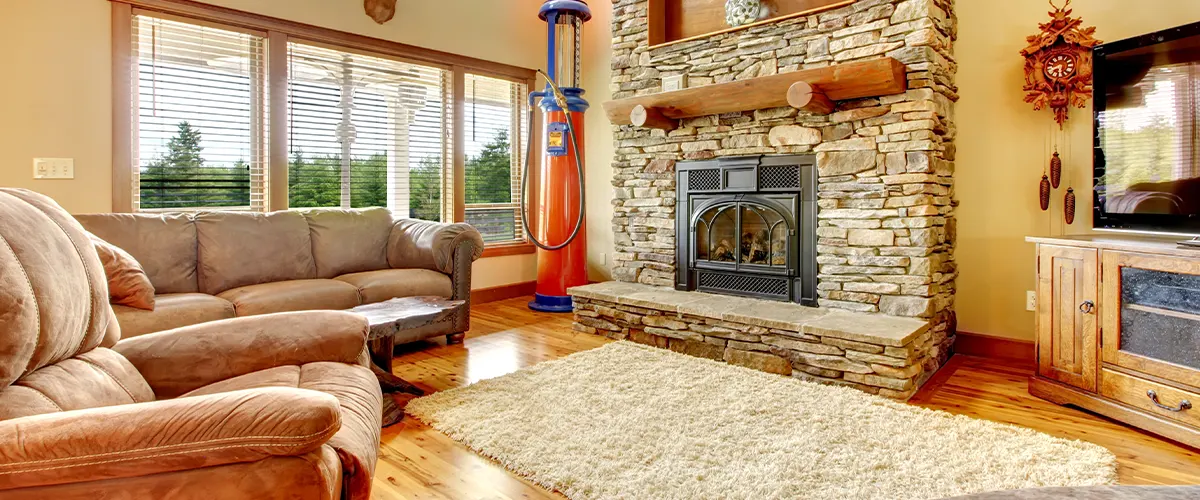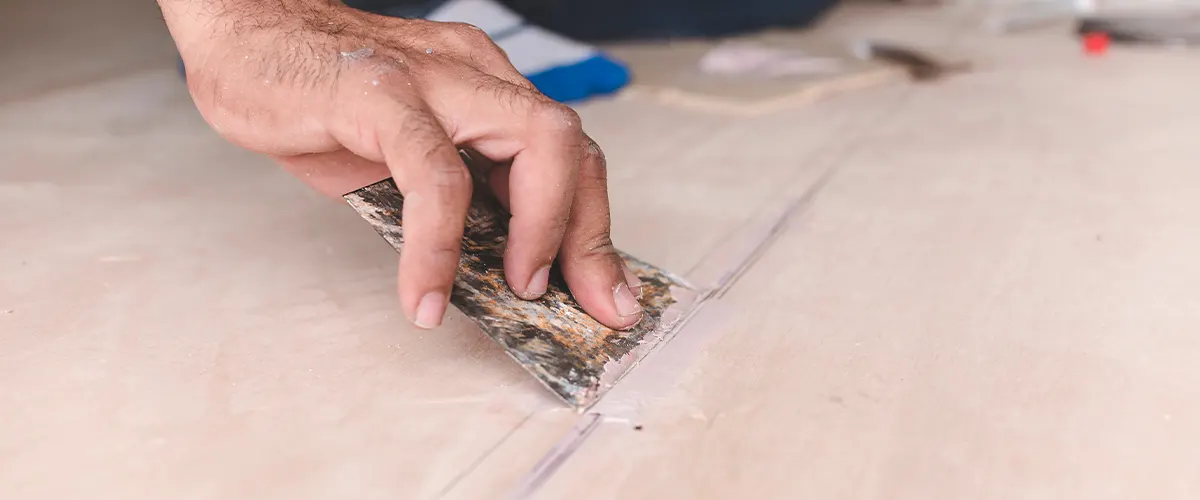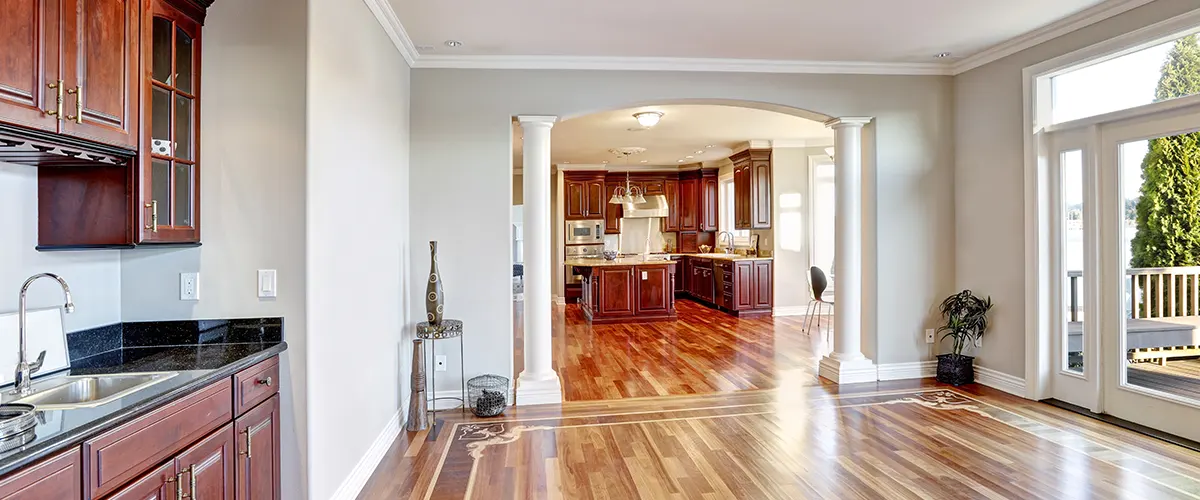What Are Wood Floors?
Wood floors are a popular choice for flooring because they offer a natural and beautiful look. They’re also durable and long-lasting. Wood floors can be stained or painted to match any décor, and they can be refinished if they start to look worn.
There are several types of wood floors, including solid wood, engineered wood, and laminate. Solid wood floors are made from a single piece of wood, while engineered wood floors are made from multiple layers of plywood or hardwood. Laminate floors have a layer of plastic or resin on top of the wood to protect them from wear and tear.

What Causes Gaps In Wood Floors?
Gaps in wood floors are most commonly caused by shrinkage. Wood is a natural material, and it will expand and contract as the humidity level changes. When the air is dry, wood will shrink and gaps may appear between the boards. In addition, water damage can cause wood to swell and then shrink as it dries out, which can also lead to gaps.
Another common cause of gaps in wood floors is inadequate installation. If the boards are not properly spaced or fastened down, they may start to separate over time. Floors that are installed over furnace rooms or other areas with dry, hot air may also be more likely to develop gaps.
How To Fill Gaps In Wood Floors
If you’ve noticed gaps in your wood floors, there are a few things you can do to fill them. One option is to use a wood filler. Wood fillers come in both paste and liquid form and can be matched to the color of your flooring. To use a wood filler, simply apply it to the gap using a putty knife. Once it’s dry, sand it down so it’s flush with the rest of the floor.
Another option for filling gaps in wood floors is to use caulk. Caulk is a flexible sealant that can be used to fill small gaps and cracks. It comes in a variety of colors, so you can choose one that closely matches your flooring. To use caulk, simply apply it to the gap with a caulking gun. Once it’s dry, sand it down so it’s level with the rest of the floor.

Preventing Gaps In Wood Floors
The best way to deal with gaps in wood floors is to prevent them from happening in the first place. There are a few things you can do to reduce the risk of your floors developing gaps or a wood stain.
One thing you can do is control the humidity in your home. Wood floors are most likely to shrink in dry conditions, so it’s important to keep the air moist. You can use a humidifier to add moisture to the air, or you can simply open up a few windows on days when the humidity is low.
Another thing you can do to prevent gaps in wood floors is to choose the right type of flooring for your home. If you live in an area with high humidity, engineered wood floors may be a better option than solid wood floors. An engineered hardwood floor is less likely to shrink and expand in response to changes in humidity.
Finally, make sure your floors are properly installed. If you’re having new floors installed, hire a professional to do the job. They will make sure the boards are spaced correctly and fastened down securely. This will help prevent gaps from developing over time.
Is This A DIY Job?
It usually takes a few hours to fix gaps in hardwood floors, and it’s a job that can be done by a DIY enthusiast without too much difficulty or expense involved. However, if the gaps are large or if there is significant water damage, it may be necessary to hire a professional to do the job. In most cases, filling gaps in a wooden floor is simply a matter of choosing the right material and following the instructions. With a little bit of effort, you can fill the gaps in your wood floors and enjoy them for years to come.
The most important thing to remember when filling gaps in wood floors is to use the right material. Wood fillers come in both paste and liquid form, and they can be matched to the color of your flooring.
Once you’ve selected the right material, simply apply it to the gap using a wood putty knife or caulking gun. Once it’s dry, sand it down so it’s flush with the rest of the wood floor. With a little bit of effort, you can fill gaps in the wood floor and enjoy it for years to come.

Conclusion
So, there you have it – a quick guide to the different types of wood flooring, their installation and use requirements, and how to deal with any gaps that may form in your flooring over time. If you’re having trouble filling gaps in your floors or would just like some professional advice on the best way to do it, don’t hesitate to get in touch with us. We’d be more than happy to help!
